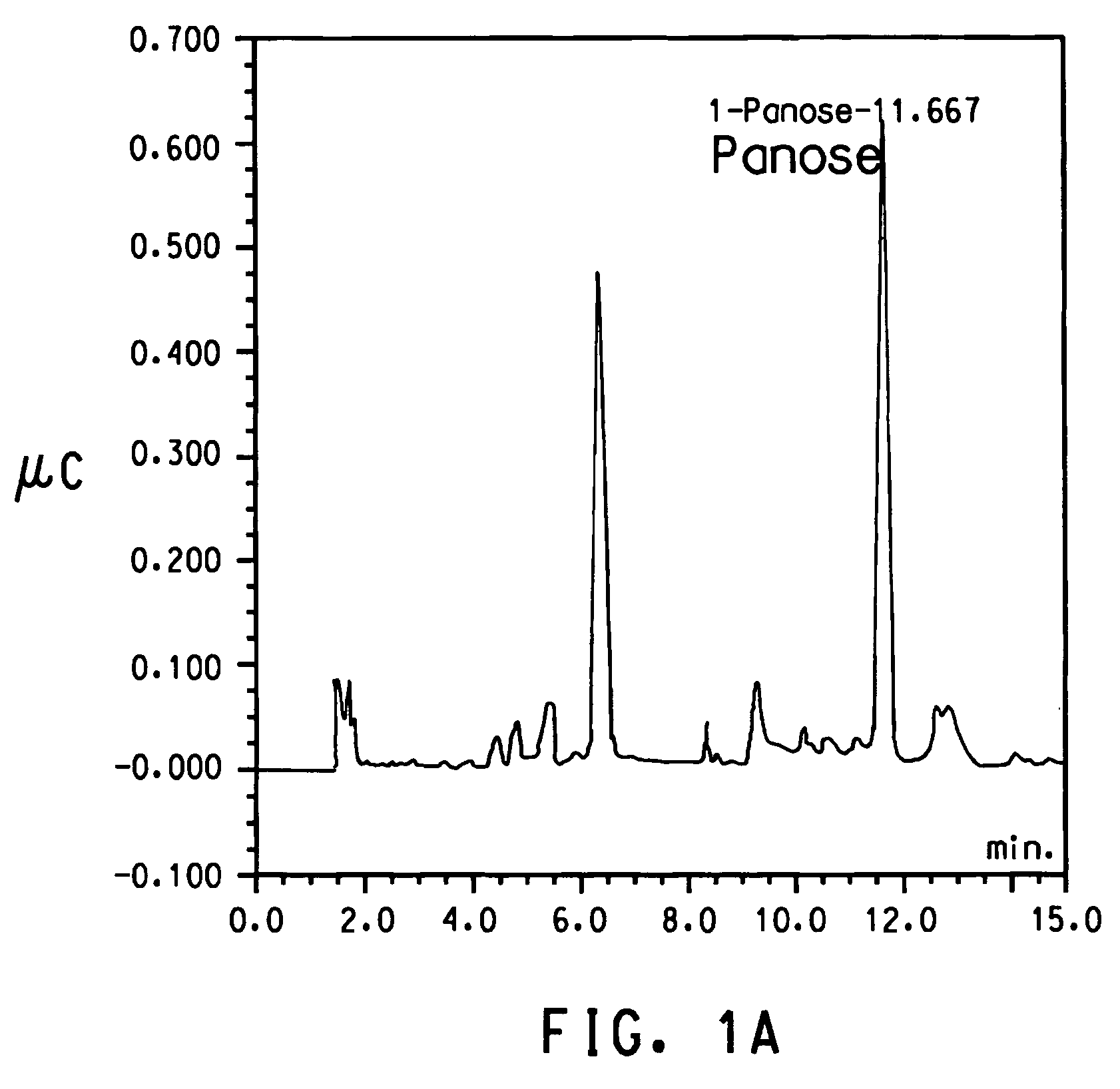Alpha(1,6)-linked glucose oligosaccharide hydrolyzing enzyme polynucleotides and polypeptides and methods of use thereof
a glucose oligosaccharide and hydrolyzing enzyme technology, applied in the field of molecular biology, can solve the problems of a lack of a process to utilize low-cost starch products in large-scale fermentative production processes, and add significantly to the cost of product manufactur
- Summary
- Abstract
- Description
- Claims
- Application Information
AI Technical Summary
Benefits of technology
Problems solved by technology
Method used
Image
Examples
example 1
Genome Sequencing of Bifidobacterium breve ATCC 15700
[0146]Bifidobacterium breve (ATCC 15700) was purchased from the American Type Culture Collection, P.O. Box 1549, Manassas, Va. 20108, U.S.A. A cell pellet was obtained and suspended in a solution containing 10 mM Na-EDTA and 50 mM Tris-HCl, pH 7.5. Genomic DNA was isolated from Bifidobacterium breve (ATCC 15700) according to standard protocols. Genomic DNA and library construction were prepared according to published protocols (Fraser et al., Science 270 (5235):397-403 (1995)).
[0147]Genomic DNA preparation: After suspension, the cells were gently lysed in 0.2% sarcosine, 20 mM beta-mercaptoethanol, and 150 units / mL of Lyticase and incubated for 30 min at 37° C. DNA was extracted twice with Tris-equilibrated phenol and twice with chloroform. DNA was precipitated in 70% ethanol and suspended in a solution containing 1 mM Na-EDTA and 10 mM Tris-HCl, pH 7.5. The DNA solution was treated with a mix of RNAases, then extracted twice with...
example 2
Identification of Carbohydrate Degradation Genes
[0150]Genes encoding isoamylase activity were identified by conducting BLAST (Basic Local Alignment Search Tool; Altschul et al., J. Mol. Biol. 215:403-410 (1993); see also www.ncbi.nlm.nih.gov / BLAST / ) searches for similarity to sequences contained in the BLAST “nr” database (comprising all non-redundant GenBank CDS translations, sequences derived from the 3-dimensional structure Brookhaven Protein Data Bank, the SWISS-PROT protein sequence database, EMBL, and DDBJ databases). The sequences obtained were analyzed for similarity to all publicly available DNA sequences contained in the “nr” database using the BLASTN algorithm provided by the National Center for Biotechnology Information (NCBI). The DNA sequences were translated in all reading frames and compared for similarity to all publicly available protein sequences contained in the “nr” database using the BLASTP algorithm (Gish and States, Nature Genetics 3:266-272 (1993)) provided ...
example 3
Intracellular Isoamylase Activity in E. coli Containing the Streptococcus mutans dexB Gene
[0153]For cloning of the dexB gene, genomic DNA was isolated from Streptococcus mutans (ATCC 25175D) using the protocol described in Jagusztyn et al. (J. Gen. Microbiol. 128:1135-1145(1982)).
[0154]Oligonucleotide primers (SEQ ID NO:7 and SEQ ID NO:8) were designed based on Streptococcus mutans (dexB) DNA sequence (Ferretti et al., Infection and Immunity 56:1585-1588 (1988)) and also included BamHI and SalI restriction sites. The dexB gene was amplified using the standard PCR protocol included with the HotStartTaq™ kit (Qiagen, Valencia, Calif.). Reactions contained 1 ng of genomic DNA and 1 μM each of primers. The resulting 1.6 kb DNA fragment was digested with the enzymes BamHI and SalI. The digested fragment was cloned directly into the plasmid pTRC99a (ampR) (Amersham-Pharmacia, Amersham, UK) resulting in a translational fusion with the LacZ gene. The plasmid, designated pTRC99-dexB, also co...
PUM
 Login to View More
Login to View More Abstract
Description
Claims
Application Information
 Login to View More
Login to View More - R&D
- Intellectual Property
- Life Sciences
- Materials
- Tech Scout
- Unparalleled Data Quality
- Higher Quality Content
- 60% Fewer Hallucinations
Browse by: Latest US Patents, China's latest patents, Technical Efficacy Thesaurus, Application Domain, Technology Topic, Popular Technical Reports.
© 2025 PatSnap. All rights reserved.Legal|Privacy policy|Modern Slavery Act Transparency Statement|Sitemap|About US| Contact US: help@patsnap.com



